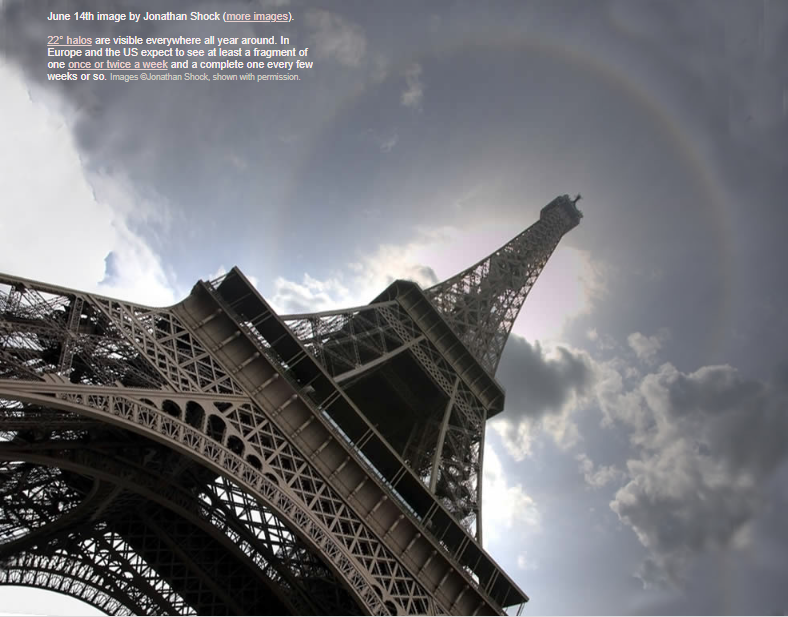Tower Optics
Tower Optics: Unveiling the Secrets of Atmospheric Phenomena
Tower optics is a captivating branch of atmospheric optics that explores the fascinating interplay between light and the atmosphere in the vicinity of tall structures such as towers, skyscrapers, and even mountains. These towering structures have the potential to create mesmerizing optical phenomena that can leave us in awe of the natural world. In this article, we will delve into the enchanting world of tower optics, shedding light on the various atmospheric phenomena that can be observed in their vicinity.
One of the most commonly observed atmospheric phenomena near towers is the 22° halo. This halo, characterized by a circular band of light at an angle of 22 degrees around the sun or moon, is visible throughout the year. In Europe and the United States, it is not uncommon to catch a glimpse of a fragment of a 22° halo once or twice a week, with complete halos occurring every few weeks. These ethereal halos are truly a sight to behold, adding a touch of mystique to our everyday lives.
Beyond the captivating 22° halo, towers can also give rise to other intriguing atmospheric optics phenomena. When the sun is low on the horizon, for instance during sunrise or sunset, towers can cast long shadows that stretch across the landscape, creating a stunning visual effect. The interplay between light and these towering structures results in elongated shadows that seem to defy the laws of perspective.
Moreover, towers can act as natural prisms, breaking down sunlight into its constituent colors and giving rise to beautiful displays of color. This phenomenon, known as tower prismatics, occurs when sunlight passes through the edges and corners of a tower, causing the light to refract and disperse. The result is a breathtaking array of colors, similar to a rainbow, emanating from the tower. Witnessing this display of nature's artistry is truly a feast for the eyes.
In addition to these mesmerizing optical phenomena, towers can also create mirages. Mirages occur when the temperature and density of the air vary significantly, causing light rays to bend and create distorted images. In the vicinity of towers, temperature inversions can often occur, where the temperature increases with height instead of decreasing. These inversions can give rise to mirages, creating the illusion of shimmering pools of water or distant objects appearing closer than they actually are.
Tower optics also encompasses the study of tower shadows and their interactions with the surrounding environment. When a tower casts a shadow on a cloud layer, for example, the result can be a captivating display of intricate patterns and shapes. These shadow effects can be further enhanced by atmospheric conditions such as cloud formations, creating a captivating interplay between light, shadows, and the surrounding atmosphere.
Furthermore, towers can influence the behavior of light passing through the atmosphere, leading to changes in atmospheric visibility. The presence of tall structures can alter the path of light rays, causing scattering and diffraction effects that can impact our perception of distance and clarity. Understanding these phenomena is not only scientifically intriguing but also has practical implications for fields such as aviation and meteorology.
In conclusion, tower optics unveils a captivating world of atmospheric phenomena that occur in the vicinity of towering structures. From the enchanting 22° halo to the captivating displays of color created by tower prismatics, these optical phenomena serve as a reminder of the beauty and complexity of the natural world. By studying and appreciating these atmospheric phenomena, we gain a deeper understanding of the interplay between light and the atmosphere, allowing us to marvel at the wonders that surround us. So next time you find yourself near a tower, take a moment to observe and appreciate the hidden secrets of tower optics that lie just beyond our everyday perception.

June 14th image by Jonathan Shock (more images).
22° halos are visible everywhere all year around. In Europe and the US expect to see at least a fragment of one once or twice a week and a complete one every few weeks or so. Images ©Jonathan Shock, shown with permission.
Note: this article has been automatically converted from the old site and may not appear as intended. You can find the original article here.
Reference Atmospheric Optics
If you use any of the definitions, information, or data presented on Atmospheric Optics, please copy the link or reference below to properly credit us as the reference source. Thank you!
-
<a href="https://atoptics.co.uk/blog/tower-optics/">Tower Optics</a>
-
"Tower Optics". Atmospheric Optics. Accessed on April 19, 2024. https://atoptics.co.uk/blog/tower-optics/.
-
"Tower Optics". Atmospheric Optics, https://atoptics.co.uk/blog/tower-optics/. Accessed 19 April, 2024
-
Tower Optics. Atmospheric Optics. Retrieved from https://atoptics.co.uk/blog/tower-optics/.